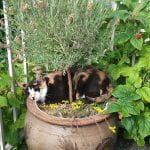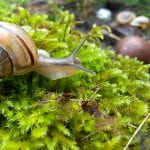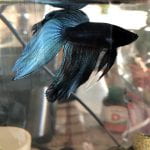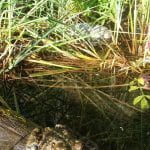Jada's Blog
My Riverside Rapid Digital Portfolio
Category: Grade 10
 Loading...
Loading...
Video Resources:
Bibliography:
Dunbar, Brian. “What Kinds of Planets Are Out There?” NASA, NASA, www.nasa.gov/vision/universe/starsgalaxies/earthsized_planets.html.
Howell, Elizabeth. “How Are Planets Formed?” Phys.org, Phys.org, 30 Jan. 2015, phys.org/news/2015-01-planets.html.
Misachi, John. “What Is The Earth Made Of?” WorldAtlas, WorldAtlas, 8 May 2018, www.worldatlas.com/articles/what-is-the-earth-made-of.html.
National Geographic Society. “Atmospheric Pressure.” National Geographic Society, 9 Oct. 2012, www.nationalgeographic.org/encyclopedia/atmospheric-pressure/.
“Planets and How They Formed.” Las Cumbres Observatory, lco.global/spacebook/solar-system/planets-and-how-they-formed
In this video we proved that magic is science by conducting and experiment. We used ionic sprays and a Bunsen burner to “magically” change the colour of fire. When an atom is heated up, it will gain energy and the outer most electrons can be pushed around. Eventually they will drop back to where they belong then release all the energy they stored which creates particles of light. For this experiment we used calcium nitrate, strontium nitrate, lithium nitrate, copper nitrate and potassium nitrate.
 Loading...
Loading...


To start my project, I chose a topic that I found relevant and important. The waste of Canadian produce stood out to me because it applies directly to us and has more of an impact than we realize. The data I found was what percentage of food is wasted, when it is wasted and why it is wasted. Because I was working with percentages, I decided to use a pie chart in an info-graphic style. With the chart in the middle, I portioned off the rest of the page based on the percentages wasted in each section. For example, 7% of produce is wasted in stores, so the section on stores took up 7% of the space on my project. I used bright colours and made the background colours split between what is wasted and what is used for emphasis. For each segment, I drew an image that represented the topic and setting. Because the section for what we consume was the largest, I also added some details about green house gases. I used lots of colours and images to make the info-graphic interesting and to catch the readers eye but kept the chart in the middle clear and simple, with a large font for the percentages to make it easy to read and clear.
Data: Produce Consumption and Waste in Canada
| What | Percent | Cause |
| Farm | 13% | -Quality and cosmetic culling
-Inaccurate estimation of demand -insufficient number of employees |
| Transportation | 16% | -Poor packaging
-damage while in transportation (bruising, dents) -spoiled (water, temperature, vermin, and pests) |
| Store | 7% | -unsold produce
-insufficient demand -damage, quality or age of produce |
| Home | 22% | -Over purchasing (buying more than can be used)
-unfinished food -not realizing how quickly food will spoil
|
| Consumed | 42% | -Food that is used
-less than half |
| Greenhouse gases | -caused by organic waste in the land fills
– when organic matter rots without oxygen, it creates greenhouse gases -bad for the environment, impact on climate change -sorting systems, green bins, recycling and compost |
|
 Loading...
Loading...
Bibliography:
Canada, Environment and Climate Change. “Government of Canada.” Canada.ca, / Gouvernement Du Canada, 11 Aug. 2017, www.canada.ca/en/environment-climate-change/services/managing-reducing-waste/municipal-solid/greenhouse-gases.html.
Canada, Environment and Climate Change. “Government of Canada.” Canada.ca, / Gouvernement Du Canada, 28 June 2019, www.canada.ca/en/environment-climate-change/services/managing-reducing-waste/food-loss-waste/taking-stock.html#toc1.
“Food Waste General Data.” Food Waste General Data | Food Policy for Canada, foodpolicyforcanada.info.yorku.ca/goals/goal-5/food-waste/general-data/#:~:text=Food%20waste%20general%20data%20%20%20Food%20category,%20%2042.66%20%2010%20more%20rows.
Ministry of Environment and Climate Change Strategy. “Food Waste Prevention for Businesses.” Province of British Columbia, Province of British Columbia, 26 Sept. 2019, www2.gov.bc.ca/gov/content/environment/waste-management/food-and-organic-waste/prevent-food-waste/prevent-business-food-waste#:~:text=In%20B.C.%20private%20businesses%20and%20local%20governments%20have,our%20landfills%20where%20it%20releases%20harmful%20greenhouse%20gases.
All drawings drawn by myself using Autodesk Sketchbook
Pie chart created using Microsoft Word
The scientific method consists of 5 main categories, observation, hypothesis, experiment, data, and conclusion. We asked the question; how two paperclips affect the flight distance of a paper airplane when distributed differently. We use the design given to us in the OneNote called Nick’s paper airplane, because we found that it had broader wings and was a better design to support weight.
Hypothesis:
Our hypothesis was that the airplane with one paper clip on the nose and one on the tail would fly the furthest, because unlike the second plane it was balanced, and unlike the first plane the weight was on the body of the plane rather than the wings, so the plane hell together better, and there was less drag on the wings. also, because the wings are centered more towards the back of the plane, the paper clip at the front would have more weight and therefore drag the plane forwards, making it more streamline.
Experiment:
In order to determine whether or not our hypothesis was correct, we made three identical paper airplanes, then choose six paper clips of the same size. for the first airplane, we put a paper clip on each wing, For the second airplane, we put two paper clips in the center of the plane, and for the last airplane, we put one paper clip on the nose and one on the tail of the plane. We then took all three planes, a meter stick, and our paper to mark the data out into the hallway. We tested each plane five times, measuring the distance each time. This was challenging, because the second airplane was poorly balanced, and tended to hit the wall. Our data would have been more accurate had we had more space.
Data:
| Type of Plane | Trial 1 | Trial 2 | Trial 3 | Trial 4 | Trial 5 | Average Distance |
| 1. clip on each wing | 7.8m | 6.3m | 5.4m | 6m | 4m | 5.9m |
| 2. two clips in the middle | 5.5m | 7.3m | 4.2m | 7.5m | 5.5m | 6m |
| 3. one clip on the nose, one on the tail | 5.7m | 7.8m | 10.2m | 8m | 5.1m | 7.56m |

In order to eliminate as many variables as possible, the same person threw all the planes, and always started from the same line. Once each plane had been tested five times, we determined the average distance traveled. Plane one and plane two traveled very similar distances, however playing three traveled a meter and a half further.
Conclusion:
our hypothesis was correct. The airplane with one paper clip on the nose and one on the tail traveled further than the other two. However, the accuracy of this experiment could be greatly improved. Our measurements we’re not necessarily accurate, because often the airplanes slid or hit the wall. Also, every time the airplanes landed, they became slightly more dented, or bent which could cause shorter flight. If we had done more trials, our results would also have been more accurate. Lastly, we cannot guarantee that the person throwing the airplanes through them at the exact same height and with the exact same force each time. There are many small variables that could have affected our data , and therefore our conclusion, but unfortunately, some of them are hard to eliminate. Next time, I would look for a larger space to run our experiments, have many more people test the planes, to determine that the results are not based on the way one person throws, and have multiple airplanes or the same type to ensure it was not that specific plane, rather the distribution of the paperclips that affected the distance traveled.
For this assignment, we each made a 15 second video with a partner then graphed the relationship of the video. The following is the video and the sheet showing the calculations.
 Loading...
Loading...
Laves les mains souvent et porte un masque. Ne touchent pas ton visage
Fait attention aux âtres pour éviter des collisions et accidents.
Soyez prudents avec les choses chaud, les appareils et les couteaux.
Utilise toujours des gants isolants ou des teneurs de marmite pour saisir les plates chaudes.
Si quelqu’un est blesser, dit immédiatement au professeur.

© 2024 Jada’s Blog
Theme by Anders Noren — Up ↑









































